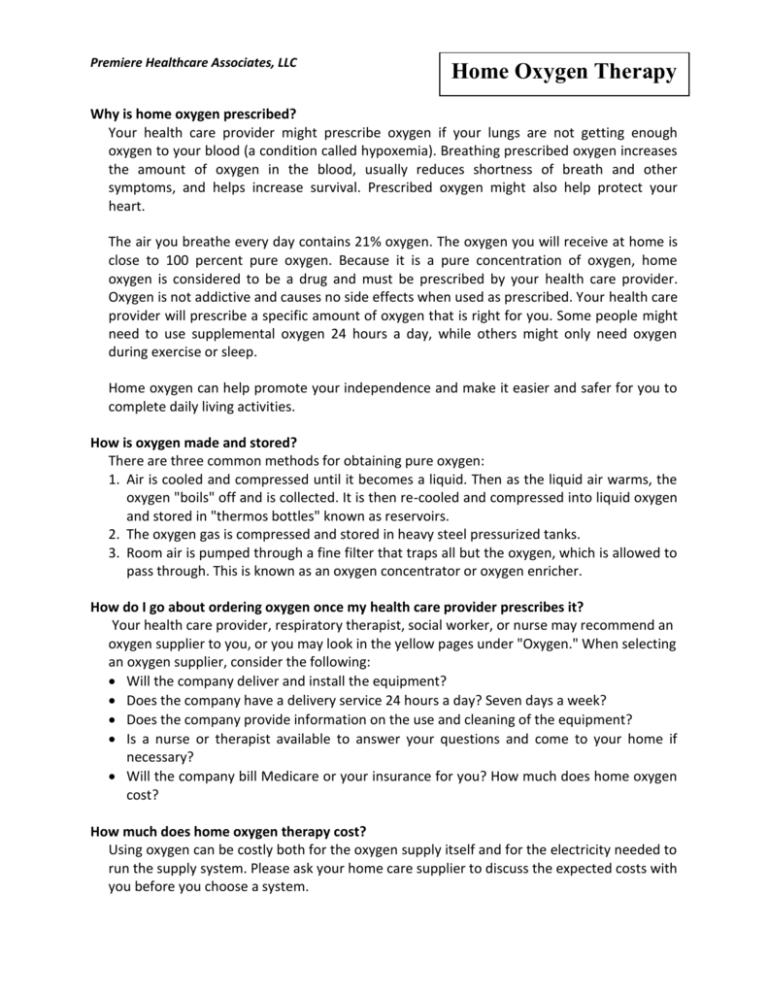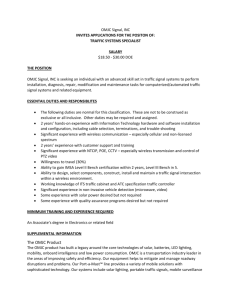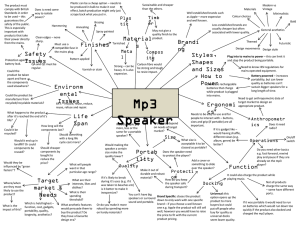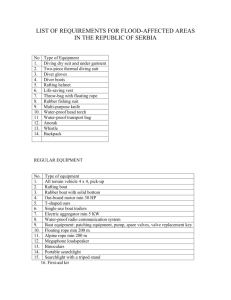
Premiere Healthcare Associates, LLC
Home Oxygen Therapy
Why is home oxygen prescribed?
Your health care provider might prescribe oxygen if your lungs are not getting enough
oxygen to your blood (a condition called hypoxemia). Breathing prescribed oxygen increases
the amount of oxygen in the blood, usually reduces shortness of breath and other
symptoms, and helps increase survival. Prescribed oxygen might also help protect your
heart.
The air you breathe every day contains 21% oxygen. The oxygen you will receive at home is
close to 100 percent pure oxygen. Because it is a pure concentration of oxygen, home
oxygen is considered to be a drug and must be prescribed by your health care provider.
Oxygen is not addictive and causes no side effects when used as prescribed. Your health care
provider will prescribe a specific amount of oxygen that is right for you. Some people might
need to use supplemental oxygen 24 hours a day, while others might only need oxygen
during exercise or sleep.
Home oxygen can help promote your independence and make it easier and safer for you to
complete daily living activities.
How is oxygen made and stored?
There are three common methods for obtaining pure oxygen:
1. Air is cooled and compressed until it becomes a liquid. Then as the liquid air warms, the
oxygen "boils" off and is collected. It is then re-cooled and compressed into liquid oxygen
and stored in "thermos bottles" known as reservoirs.
2. The oxygen gas is compressed and stored in heavy steel pressurized tanks.
3. Room air is pumped through a fine filter that traps all but the oxygen, which is allowed to
pass through. This is known as an oxygen concentrator or oxygen enricher.
How do I go about ordering oxygen once my health care provider prescribes it?
Your health care provider, respiratory therapist, social worker, or nurse may recommend an
oxygen supplier to you, or you may look in the yellow pages under "Oxygen." When selecting
an oxygen supplier, consider the following:
Will the company deliver and install the equipment?
Does the company have a delivery service 24 hours a day? Seven days a week?
Does the company provide information on the use and cleaning of the equipment?
Is a nurse or therapist available to answer your questions and come to your home if
necessary?
Will the company bill Medicare or your insurance for you? How much does home oxygen
cost?
How much does home oxygen therapy cost?
Using oxygen can be costly both for the oxygen supply itself and for the electricity needed to
run the supply system. Please ask your home care supplier to discuss the expected costs with
you before you choose a system.
Will Medicare and/or my insurance pay for it?
Not all insurance carriers are alike, and covered expenses vary among carriers. In most cases,
however, oxygen therapy is covered when your health care provider provides the results of
certain laboratory tests that prove that supplemental oxygen is needed for your well-being.
These tests measure the amount of oxygen carried by the blood and were used to help your
health care provider make the diagnosis.
You must have Medicare Part B coverage and your health care provider must have
documented your need for oxygen equipment and supplies. The health care provider must
also write you an order (prescription) for the equipment. Your health care provider will know
what is necessary to qualify for the type of oxygen equipment and supplies prescribed for
you. Medicare will pay for the oxygen equipment and supplies when:
It will be used repeatedly
It is needed for a medical purpose
It is needed for an illness or injury
It is for use in the home
To qualify for oxygen equipment and supplies:
Your health care provider must document a severe lung disease or other condition that
interferes with your ability to breathe
Your condition might improve with the use of oxygen
Your blood gas level falls within a certain ranges.
Other alternative measures were not helpful for you.
Under the above conditions, Medicare helps pay for:
Systems for furnishing oxygen
Containers that store oxygen
Tubing and related supplies for the delivery of oxygen
Oxygen contents
Portable oxygen units when used to move around the home
Medicare will not pay for:
Portable oxygen for use during sleep only
Portable oxygen when provided only as a backup to a stationary oxygen system
Cost Associated With Oxygen Equipment and Supplies
How much you pay will depend on whether or not you have Part B coverage and where you
buy your equipment. Basically, if you are enrolled in Medicare Part B:
Medicare will pay 80% of approved expenses, after you have paid your yearly
deductible.
You will pay less if you buy from a supplier who accepts assignment. A supplier who
accepts assignment has agreed to charge only the Medicare approved amount.
You may owe little to no money for your equipment and supplies, if you have a
Medicare supplemental plan (Medigap).
You may be restricted on who you can go to for service if you receive your service
through a Medicare
Advantage Health Plan. You should contact that plan for details.
The monthly allowance for stationary oxygen equipment covers the oxygen equipment;
oxygen contents including all refills for stationary and portable systems; equipment delivery,
setup, and maintenance; accessories and supplies; patient education and other services
associated with furnishing home oxygen. Medicare pays an additional amount for portable
equipment that a beneficiary rents to provide mobility in the home. Typically, beneficiaries
rent both stationary and portable units.
Medicare will pay for oxygen as a rental for the first 36 months. After that time if you still
need the equipment and all your deductible and co-pays are met, the supplier will continue
to own the equipment. Your supplier will supply the oxygen equipment and related supplies
for 2 additional years (5 years total), as long as oxygen is still medically necessary.
It is important to do your homework. Read about the factors that affect how much coverage
you will receive. Make sure all paperwork is completed correctly and that you buy your
equipment through an approved supplier that accepts assignment.
What are the methods used to deliver home oxygen?
Three types of systems are available to provide home oxygen, including compressed oxygen
(tanks), liquid oxygen, and oxygen concentrators. With all of these systems, oxygen is
inhaled through a two-pronged lightweight tube called a nasal cannula, or on rare occasions,
an oxygen mask.
A health care provider will discuss your options with you and might recommend one system
based on your overall condition and your personal needs. You can also meet with home care
representatives from a variety of medical supply companies to evaluate which product lines
might best fit your needs. Your health care provider can give you a list of companies that
supply home oxygen equipment and supplies. (Please see section on "Important Oxygen Use
Precautions.")
What is a compressed oxygen system?
Compressed oxygen comes in a tank that stores oxygen as a gas. A flow meter and a
regulator are attached to the tank to adjust the oxygen flow. The tanks vary in size, from
very large stationary tanks to tanks that are small enough to carry around.
The compressed oxygen system is generally prescribed when oxygen is not needed all the
time, such as only when walking or performing physical activity.
What is a liquid oxygen system?
A liquid oxygen system includes a large stationary unit that stays in the
home. It also includes a small, portable canister (weighing from 5 to 13
pounds) that can be filled from the stationary unit for trips outside the
home. It can be hung over the shoulder (as shown, left) or pulled on a roller
cart. How long it lasts depends on the size of the portable tank and the flow
rate.
Even when not in use, evaporation will empty the portable canister over time. Always check
your portable canister before use.
What is an oxygen concentrator system?
The oxygen concentrator is an electric oxygen delivery system about the size of a large
suitcase. The concentrator extracts some of the air from the room and separates the oxygen
from other gases in the air. Oxygen is then delivered to you through a nasal cannula. When
in use, the concentrator should be placed in an open area. Never place it in a closet or other
closed space.
Advantages
It allows the user to be mobile, promoting an active lifestyle.
(User can fill own portable tank.)
It can deliver oxygen at a high flow rate.
It requires no electricity.
It doesn’t make much noise; it is relatively silent.
More oxygen can be stored in a liquid form than a gaseous form.
Disadvantages
The large tank needs to be refilled regularly by a service technician. Depending on the
flow rate and the size of the tank, a liquid oxygen system might need to be refilled from
once or twice a week to once a month.
The oxygen user must be home for scheduled tank fill-ups. The user must also return
home to refill portable tank.
Contents of tanks evaporate, making it necessary to have the tank refilled often.
What are oxygen conserving systems?
Oxygen conserving devices are becoming increasingly popular.
Since these devices conserve oxygen, smaller, portable
systems (tanks or liquid vessels) can provide hours of oxygen
while you are away from home. Unfortunately, not everyone
can tolerate these devices, so it is important to ask your
health care provider before using a conserving device.
The most popular conserving devices are demand inspiratory
flow systems. These devices deliver a burst of oxygen when
you inhale and turn off when you exhale. This intermittent flow of oxygen allows small
cylinders and liquid portables to last three to six times longer as compared to conventional
continuous flow devices.
Other oxygen conserving devices include the demand nasal cannula and the reservoir nasal
cannula.
Are there any other options?
Another option is the HELIOS personal oxygen system, which is smaller and lighter than
other oxygen systems. It consists of two parts, the portable oxygen unit and a home liquid
oxygen reservoir. The portable unit has a built-in device that allows oxygen to be delivered
when you breathe in and stops when you breathe out. The reservoir stores the liquid oxygen
for the portable unit. The portable unit can be worn on a waist belt, shoulder strap, or
backpack, allowing for greater freedom.
Is home oxygen therapy safe?
Yes. Oxygen is a safe gas as long as it is used properly. Contrary to what most people believe,
oxygen will not explode. Oxygen does, however, support combustion. Therefore, any
material that is already burning will burn much faster and hotter in an oxygen-enriched
atmosphere. It is very important to follow the precautions listed on the next page so that
you and your family are safe when you are using your oxygen.
How can I tell if I am getting enough oxygen? Too much?
You might anticipate that some of the symptoms you had before using the oxygen will start
to go away as your blood's oxygen level returns to normal. The only way to be sure you are
getting the right amount of oxygen is to have the oxygen level in your blood measured while
using the supplemental oxygen.
If new symptoms, such as headaches, confusion, increased sleepiness, etc., appear, you
might be getting too much oxygen. Notify your health care provider. Do not change the liter
flow or hours of usage without first checking with your health care provider.
Can I become addicted to oxygen?
Oxygen is not addicting. We all need oxygen to live. If your lungs and/or heart are diseased
and cannot supply enough oxygen to your body from normal room air, you need to breathe
supplemental oxygen. Should your condition improve, you may no longer require
supplemental oxygen.
What are the basic services I should expect from my oxygen supplier?
Basic services for home oxygen users include:
Home delivery and set-up of equipment
Supply of portable oxygen and additional refills — With a liquid oxygen system, the
technician should fill the portable tank for you during the initial set-up. The
technician should also demonstrate the proper filling technique for you. It will be
your responsibility to fill the portable tank after the initial set-up.
Instruction in the use of equipment
24-hour emergency services
Documentation to support the medical need as prescribed by health care providers
Billing to various insurance carriers
Oxygen use precautions
1. Stay at least six feet away from any open flame or heat source (candles, gas stove, etc.)
when you are using your oxygen system. If you must cook while using oxygen, make
sure your tubing will not touch the gas flame or electric burner. (Tuck the tubing in your
shirt or position it behind you.)
2.
3.
4.
5.
6.
7.
8.
9.
10.
11.
12.
13.
14.
15.
16.
17.
18.
19.
20.
21.
Do not store your oxygen system near any heat sources or open flames.
Do not smoke nor allow others to smoke in the same room as your oxygen system.
Cigarette smoking is very dangerous. Sparks from a lighted cigarette could cause facial
burns.
Post "No Smoking" signs in the room where your oxygen is kept.
Do not change the oxygen flow rate on your own. This can lead to serious side-effects. If
you feel you are not getting enough oxygen, contact your health care provider and
notify your home care supplier.
Never use more than 50 feet of oxygen tubing. This can dilute the concentration of
oxygen that you are receiving.
Do not expose your oxygen equipment to electrical appliances (such as electric razors,
hair dryers, electric blankets, etc.).
Be sure that all electrical equipment in the area near the oxygen is properly grounded.
Be sure to have a functioning smoke detector and fire extinguisher in your home at all
times.
Keep the oxygen system away from aerosol cans or sprays, including air fresheners or
hair spray. These products are very flammable.
Keep the oxygen system clean and dust-free. The person who delivers your oxygen will
show you how to do this.
Do not use cleaning products or other products containing grease or oils, petroleum
jelly, alcohol, or flammable liquids on or near your oxygen system. These substances
cause oxygen to be flammable.
Keep the oxygen system in a place where it won’t get knocked over.
Always store your oxygen equipment in a well-ventilated area.
An oxygen cylinder must be secured at all times. Put it in a cart or lay it down flat.
Do not carry liquid oxygen in a backpack or other enclosed space. Carrying cases,
shoulder or hand bags, shoulder straps, and backpack oxygen units are available that
provide proper ventilation for the unit to ensure safety.
Never use extension cords with any medical equipment.
Secure loose cords and extra tubing so you don’t trip on them when using your oxygen
system.
Secure floor mats and throw rugs so that you will not trip or fall when using your oxygen
system.
Be sure doorways, hallways, and rooms can accommodate you if you have a portable
oxygen system.
Notify your electric company if you are using an oxygen concentrator system so they can
make your house a priority during a power outage.
22. Oxygen is a drug and must be used as your health care provider ordered. Too much or
too little can be harmful.
23. Take precautions to avoid skin contact when filling your portable liquid oxygen tank, as
frost buildup could cause injury.
24. Always have backup tanks available, and know how to use them.
Myths and Truths about oxygen
Myth: Oxygen is addictive.
Truth: Oxygen is NOT addictive.
Myth: If I have a stuffy nose, I shouldn’t bother using my nasal cannula.
Truth: Oxygen can still be delivered even if you have a stuffy nose.
Myth: Once you start using oxygen, you’ll need it for the rest of your life.
Truth: Many people have discontinued oxygen use after other appropriate treatments have
taken effect. This can take time, though.
Myth: People who need oxygen must be confined to their homes and cannot do anything,
including travel.
Truth: People who use oxygen can lead a normal life. There are several types of portable
oxygen systems available that allow people to be more active and mobile. Oxygen can
improve exercise capacity. People who use oxygen can travel with advanced planning.
Myth: If a little oxygen is good, more oxygen is better.
Truth: Oxygen is a drug. Use it as prescribed or instructed. Like any drug, too much or too
little can be harmful.
Myth: Shortness of breath means a lack of oxygen, so if you become short of breath you
should use oxygen.
Truth: Shortness of breath is not always associated with a lack of oxygen. If low oxygen is not
the cause, taking oxygen will not help. (Your health care provider can test to see if you need
oxygen by taking an arterial blood sample).
© Copyright 1995-2010 The Cleveland Clinic Foundation. All rights reserved









